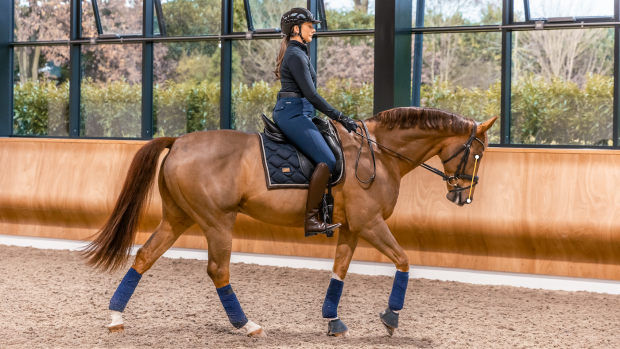Vets, farriers and owners now have the ability to capture and analyse the movement of horses, thanks to a revolutionary new technique called Equinalysis.
The computer program aims to highlight subtle changes in a horse’s locomotion and provide a video record of how a horse’s movements change during the course of its competitive life. This will allow vets and farriers to improve the horse’s capabilities through techniques such as dynamic shoeing.
Haydn Price, consultant farrier behind the gait analysis system, which has been developed with a research grant from the Welsh Development Agency and is designed for use on site, explains how the project came about.
“Frustration got the better of me when I was examining horses’ movement for my work. We could film a horse’s movement and offer treatment, and although I could prove my theories by showing the film frame by frame, it was still only my opinion. I needed to be able to prove cause and effect using visual evidence,” he explains.
“I was desperate to develop a tool which could be used for farriery, physiotherapy and veterinary work, both in practice and education.”
In Price’s view, the current system of assessing lameness on a visual basis is archaic and entirely subjective. What one person considers lame, another considers unsound. A large majority of people would not notice a minor variation in movement shown in a video, while Equinalysis clearly demonstrates the enormous difference that fine-tuning in shoeing or veterinary care can make.
He says: “This system means that I can prove to an onlooker that by altering a shoe by, for instance, three millimetres at the front, I can change the knee action by six degrees. That is an enormous variation, but is virtually unnoticeable to the naked human eye.”
Equinalysis can record a baseline measurement of:
- Angles of limb movement
- Angles of limb extension
- Joint flexion
- Hock movement
Not only does the program allow accurate diagnosis and treatment of problems, but it also provides a detailed biomechanical profile of a horse, which can aid remedial or preventative treatment. Even more importantly, in Haydn Price’s view, it means that if something does go wrong, a credible comparison can be made with the horse’s original gait.
“Rather than simply waiting until a horse has a problem, we screen them to get a baseline measurement while they are moving healthily, which gives us basic data. This means we have a foundation to backtrack to should a problem arise,” he says.
There have been some questions raised concerning the impact Equinalysis could have on horse insurance. Theoretically, the most minor problems could be detected at an early stage, providing a get-out clause for insurance companies, but Price is adamant that on the contrary, the system will provide a security blanket for owner, vet and insurance company alike.
He explains: “The owner needs to know what its horse is doing on the day he buys it. The vet needs to be able to backtrack to the horse’s original movement if there is a problem, and the insurance company is safe in the knowledge that should a problem occur, it can be dealt with promptly and effectively. All parties concerned will have quantifiable evidence rather than guesswork on which to base their decisions.”
The system has been received enthusiastically by the equestrian world. In spite of some initial scepticism, riders such as Richard Davison and Scott Smith are now great fans.
Davison recently told Horse & Hound: “I am keeping the horses regularly monitored as the flight paths of their limbs (the mechanics of the way the horses move) change as they get stronger. As a result, we’re making subtle changes all the time in the way they’re being shod.”
The system, Price stresses, is unlike previous research programs of its kind because of the simplicity of the equipment required. A laptop, digital camera and software complete the scheme, and although at the moment the system is aimed primarily at vets, physiotherapists and farriers, it is hoped that it will be developed for more general use in the near future.
Haydn Price concludes: “Obviously the scheme is aimed at the performance horse, and although so far the system has only been used by vets and farriers, there isn’t really any reason why a horse owner couldn’t use it. A day’s training would easily suffice to allow them to use the software.”
The program is available from May 2004. For further details, visit: www.equinalysis.co.uk



